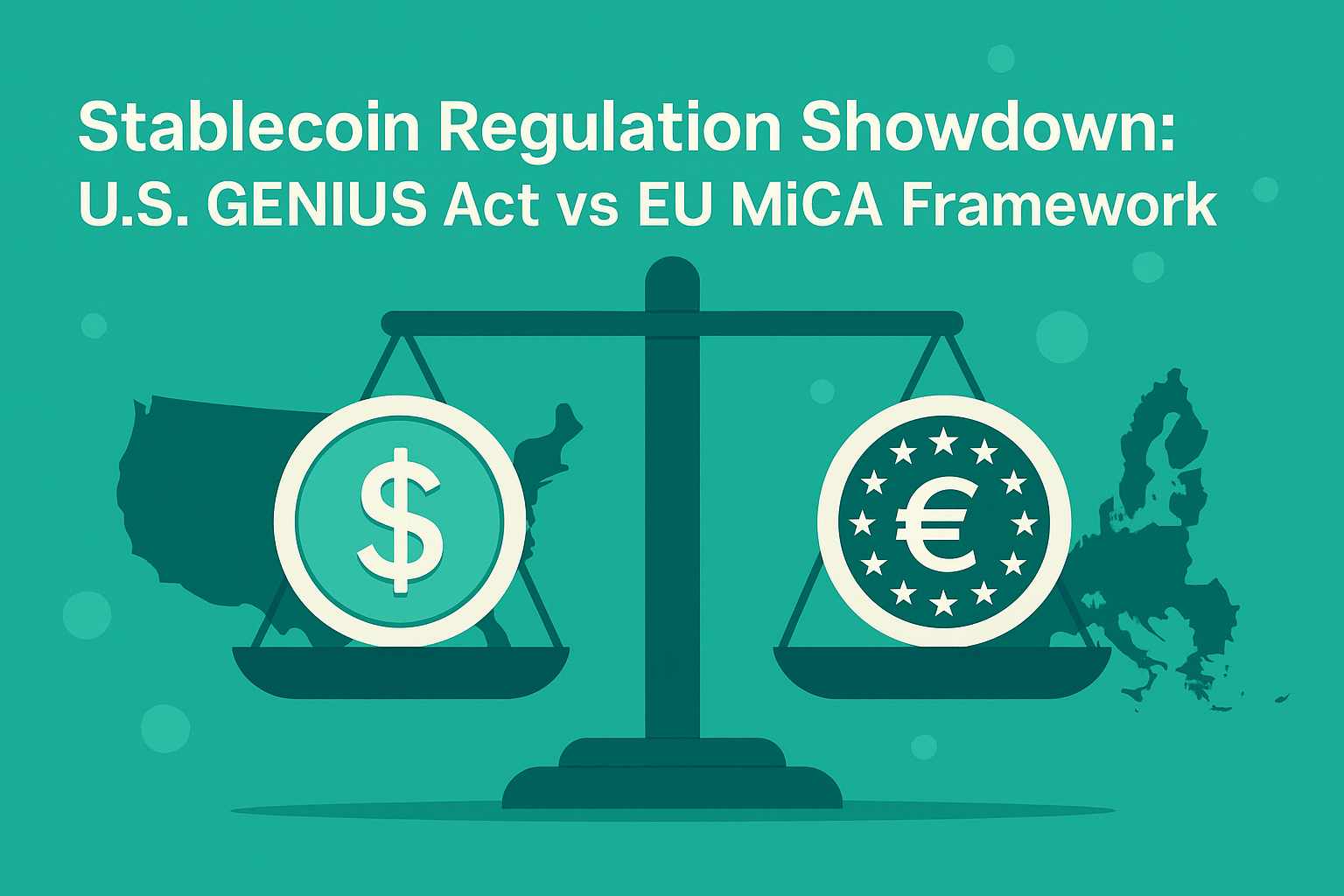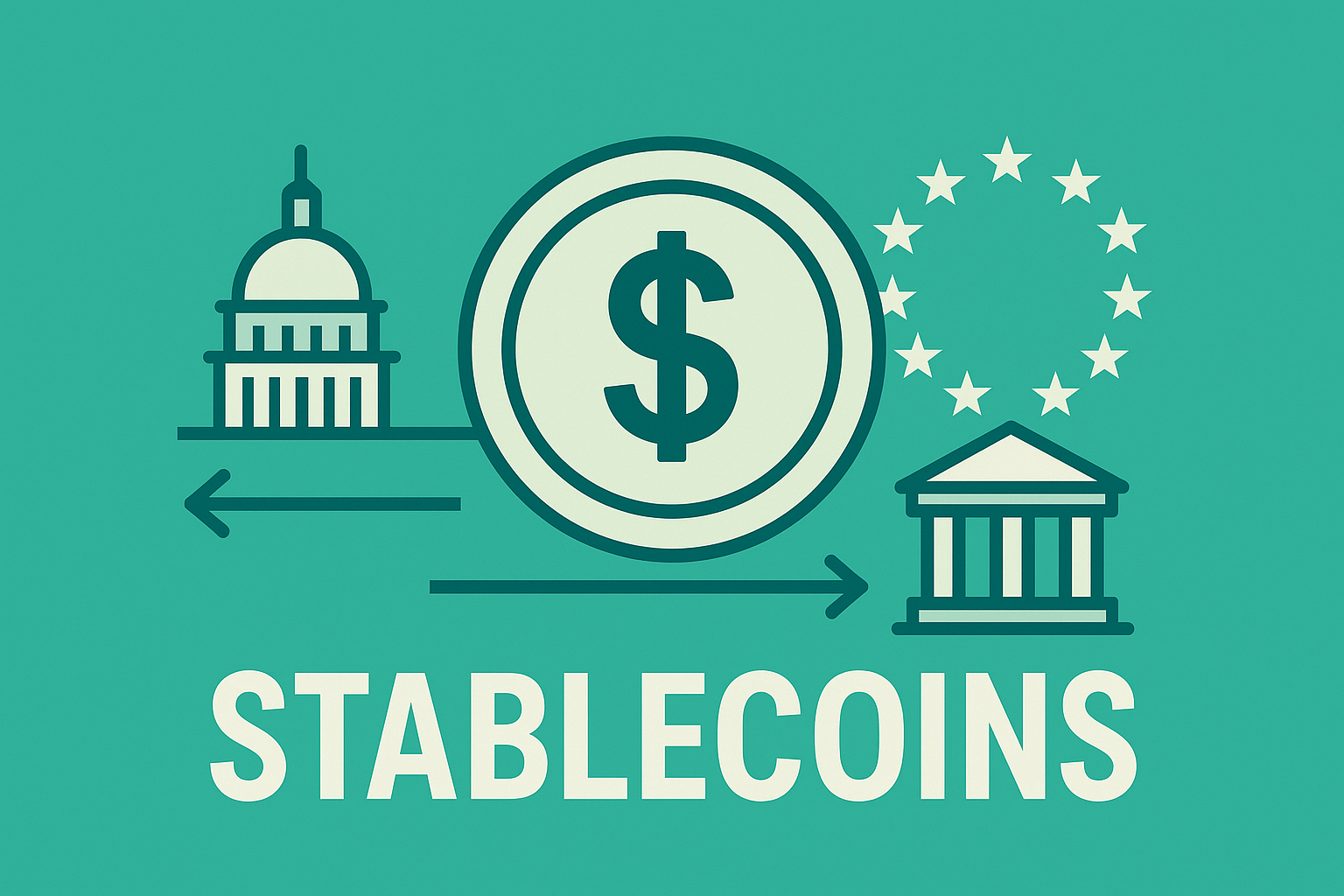Wrote by : Global Economist 2025/10
— The U.S. GENIUS Act and the EU MiCA Framework —
1. Introduction
Stablecoins are rapidly becoming central to digital finance, serving as both a medium of payment and a store of value. The U.S. and the European Union are each advancing distinct regulatory regimes that will shape financial stability, cross-border capital flows, and the relative strength of the dollar and the euro in the international monetary order. This report compares the U.S. GENIUS Act and the EU’s MiCA regulation, identifying points of convergence, divergence, and their broader implications for global finance.
2. The U.S. Framework: The GENIUS Act
- Supervisory Model: A dual structure that combines strict bank-like oversight with room for private innovation. Issuers are limited to bank subsidiaries or specially authorized state entities.
- Reserve Assets: 100% backing with cash and short-term U.S. Treasuries. Strict 1:1 redemption requirements.
- Interest Payments: Explicitly prohibited, to prevent stablecoins from competing with deposits or money market funds.
- Foreign Issuers: Only issuers from jurisdictions with equivalent regulation are permitted, subject to OCC registration and domestic custody.
- Strategic Goal: Promote adoption of dollar-denominated tokens to reinforce U.S. monetary dominance and support demand for Treasuries.
3. The EU Framework: MiCA and ECB Guidance
- Institutional Features: Classifies tokens as “asset-referenced” or “e-money” stablecoins, applying cross-cutting obligations on issuers.
- Reserves and Liquidity: Mandatory holdings of high-quality liquid assets, daily liquidity management, and redemption guarantees.
- Multi-Issuer Risk: Special provisions for joint issuance with non-EU entities, including equivalence recognition and asset-transfer safeguards.
- Supervision: The EBA and ESMA are tasked with stress-testing and disclosure standards, while the ECB focuses on systemic risk.
- Policy Objective: Prioritize financial stability and consumer protection, especially by tightening control over non-EU issuers.
4. Convergence and Divergence
- Convergence
- Obligation to hold high-quality reserves
- Strict disclosure and governance requirements
- Movement toward bank-like prudential standards
- Divergence
- Interest-bearing tokens: Prohibited in the U.S., conditionally constrained in the EU
- Foreign regulation: The U.S. emphasizes sales-side oversight (domestic distribution), while the EU emphasizes entry barriers for external issuers (host-side restrictions)
5. Implications for Global Finance
- Reduced Regulatory Arbitrage: Alignment between the U.S. and EU will narrow the space for “lightly regulated” jurisdictions, raising barriers for emerging-market issuers.
- Boost for Dollar and Treasuries: U.S. rules encourage issuers to hold Treasuries, indirectly reinforcing sovereign debt financing.
- Defensive Posture for the Euro: MiCA’s emphasis on barriers to external issuers reflects a strategy to insulate euro-denominated markets.
- New Fault Line: The U.S. pursues global adoption and monetary hegemony, while the EU prioritizes internal stability and consumer protection.
6. Key Issues to Watch
- U.S. Treasury Implementation: Detailed definitions of eligible reserves and default-resolution mechanisms.
- EU Equivalence Recognition: How strict the EU will be in recognizing non-EU regimes as “equivalent.”
- Regulation of Interest-bearing Tokens: Whether regulators can effectively prevent the evolution of crypto-based money market funds.
- Sanctions Compliance: Addressing cases of sanction evasion (e.g., Russian-linked stablecoin schemes).
7. Conclusion
The U.S. and EU are converging on a shared principle: stablecoins must be brought under bank-like discipline. Yet their strategic orientations differ: the U.S. sees stablecoins as an instrument of global dollarization and Treasury support, while the EU views them as a potential systemic risk to be tightly contained. This dual approach will both harmonize global standards and sharpen the use of regulation as a geopolitical tool in the contest over monetary and financial primacy.


